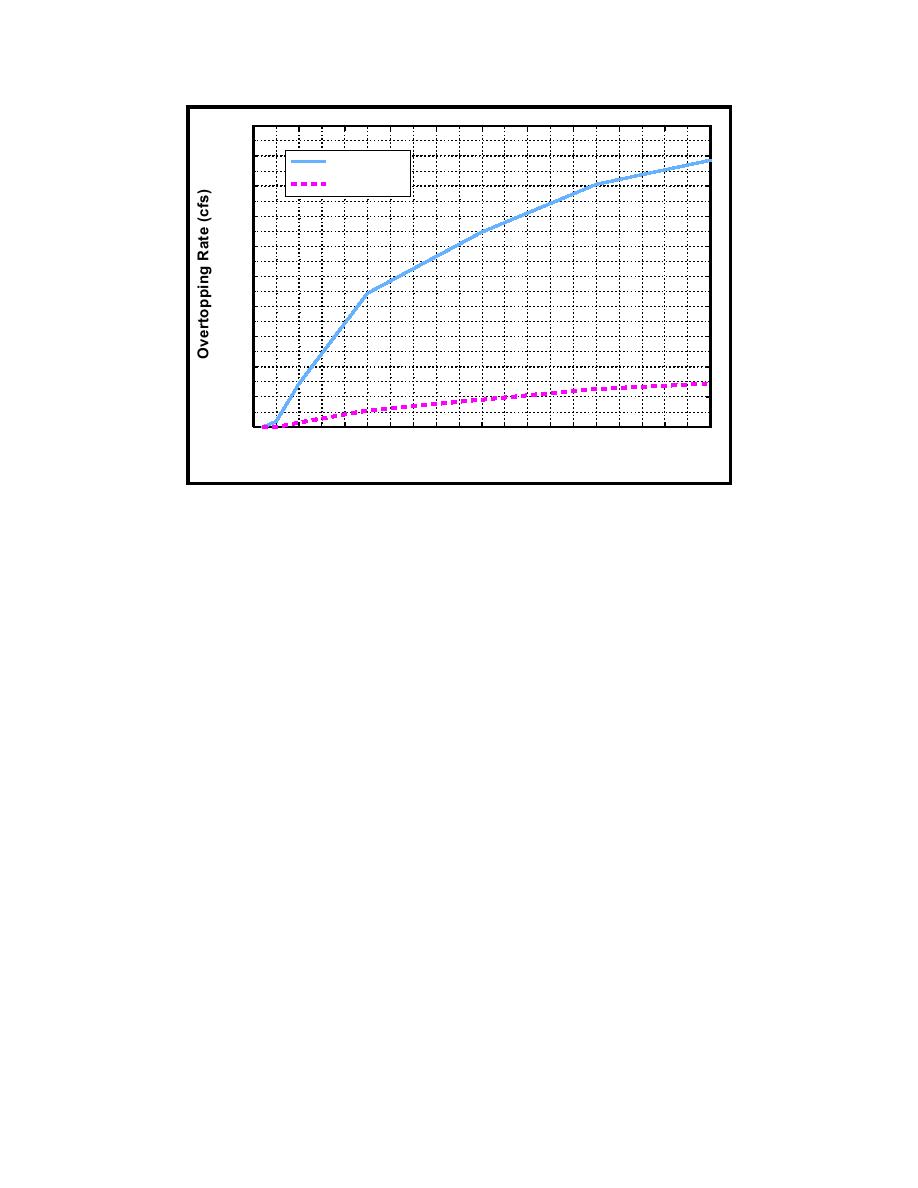
g
g
j
g
2000
1800
Existing
Plan
1600
1400
1200
1000
800
600
400
200
0
0
10
20
30
40
50
60
70
80
90
100
Return Period (years)
Figure 16. Total overtopping rate along project length (To convert cubic feet per
second to cubic meters per second, multiply by 0.02831685)
Two additional key points affect interpretation of the harbor side total water
levels and stage-frequency relationships. First, the total water level is reached
only by the crest of a wave with height equal to the significant wave height or by
the portion of crest above that level for waves higher than the significant wave
height. Thus, the total water level would be reached or exceeded for short time
intervals (several seconds) interspersed with longer time periods of lower water
level. Second, the wave contribution is strongly dependent on reflection coeffi-
cient at the shore, which is not well-documented. This dependence is especially
important at the two most exposed stations (Stations 11 and 12), where a reflec-
tion coefficient of 0.5 was used. Reflection coefficient at the more sheltered
stations, with highly oblique exposure to the open harbor (Stations 6 through
10), was reduced to 0.1.
44
Chapter 5
Development of Overtopping and Stage-Frequency Relationships



 Previous Page
Previous Page
